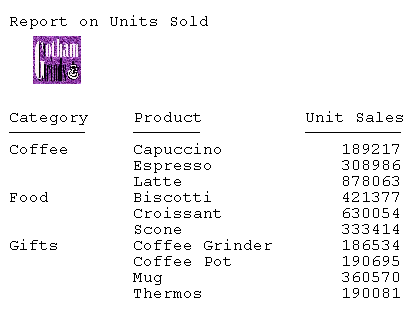Creating HTML Reports With Absolute Positioning
|
How to: |
|
Reference: |
Format DHTML provides HTML output that has most of the features normally associated with output formatted for printing such as PDF or PostScript output. You can create an HTML file (.htm) or a Web Archive file (.mht). The type of output file produced is controlled by the value of the HTMLARCHIVE parameter.
Some of the features supported by format DHTML are:
- Absolute positioning. DHTML precisely places text and images inside an HTML report, allowing you to use the same StyleSheet syntax to lay out HTML as you use for PDF or PS output.
- On demand paging. On demand paging is available with SET HTMLARCHIVE=OFF.
- PDF StyleSheet features. For example, the following features are supported: grids, background colors, OVER.
Syntax: How to Create Web Archive Report Output
SET HTMLARCHIVE = {ON|OFF} where:
- ON
-
Creates output in Web Archive format. The file type of the output file is MHT.
- OFF
-
Creates output in HTML format. The file type of the output file is HTM. OFF is the default value.
Syntax: How to Create a DHTML Report
[ON TABLE] HOLD [AS name] FORMAT DHTML
where:
- name
-
Specifies the name of the output file. The extension will be HTML if SET HTMLARCHIVE is OFF or MHT if SET HTMLARCHIVE is ON.
Reference: Usage Notes for Format DHTML
- The font map file for DHTML reports is member DHTML in the ERRORS data set.
- Legacy compound reports are not supported.
Example: Creating a DHTML Report
The following example creates a DHTML file that has an image with absolute positioning:
SET HTMLARCHIVE = OFF TABLE FILE GGSALES SUM UNITS BY CATEGORY BY PRODUCT ON TABLE SUBHEAD "Report on Units Sold" " " " " " " " " " " ON TABLE SET PAGE-NUM OFF ON TABLE HOLD FORMAT DHTML ON TABLE SET STYLE * TYPE=TABHEADING,IMAGE=c:\images\GOTHAM.GIF, POSITION=(.25 .25), SIZE=(.5 .5), $ ENDSTYLE END
The output shows that the look and positioning are the same as they would be for a PDF report:
